
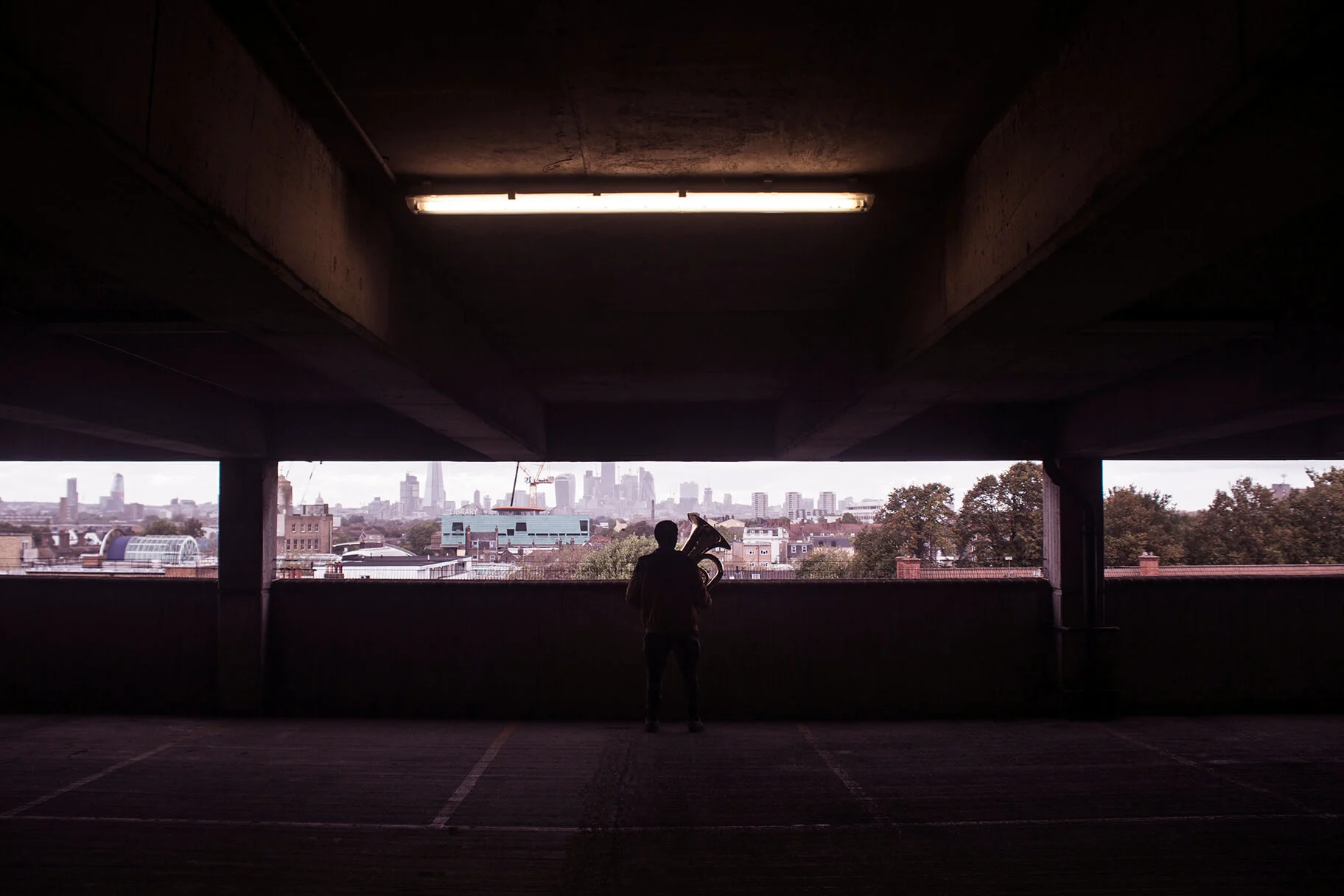
In the past, interest in UK jazz has seemed to come and go in waves, and the London scene is currently riding the crest of its own. To better understand the reasons for this revival, Alex Kahl spoke to three artists, illustrator Gaurab Thakali, photographer Deirdre O’Callaghan and film director Fabrice Bourgelle — each of whom are portraying the scene in their own unique way.
Their creative projects intertwine on the album We Out Here, the latest offering from label Brownswood Recordings, which features nine songs from the capital’s most talented jazz artists.
Gaurab illustrated the sleeve art, while Deirdre photographed a number of the artists credited on the album. Fabrice, meanwhile, captures the recording process in his documentary A Ldn Story, which emphasizes the sense of community amongst the jazz musicians.
The album perfectly summarizes the current state of the London jazz scene. More than just a compilation album, it was recorded during a three-day studio session with artists influencing one another as they went – from the featured musicians themselves, to other artists like Gaurab, Fabrice and Deirdre collaborating and capturing the scene.
In each of these projects, their love for jazz’ vibrancy shines through. Below, they speak about their individual approaches to capturing the London scene.

Gaurab Thakali
I got introduced to jazz in depth by my friends who were studying music while we were all at university. I was immediately hooked and started discovering more music and artists. In that process I met a lot of musicians, especially in the south London area, who were performing week in, week out. I was already referencing images from the 1940s to 1970s New York jazz scene and it was natural to pay attention to what was going on in London, where I’ve been living since 2006.
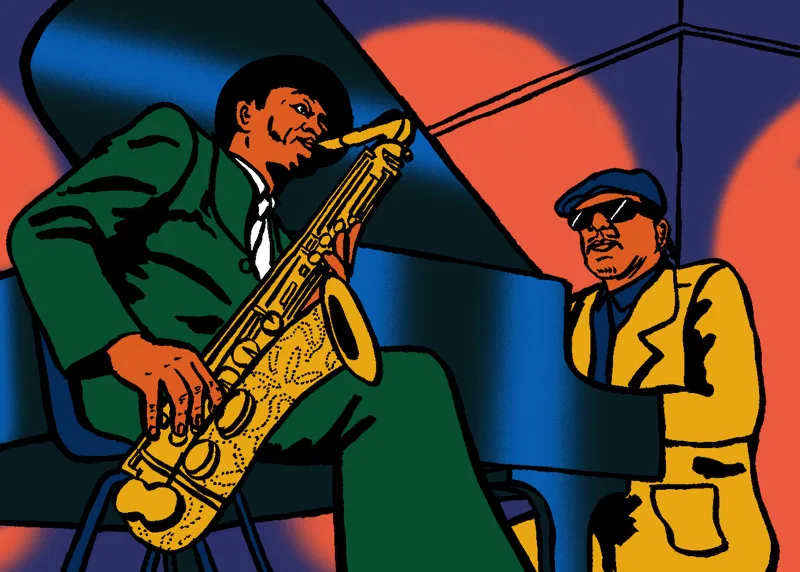
I think with jazz the perception of the music or its old-fashioned image was something that I kind of ignored, because the music itself is so full of energy and new ideas. For example listening to Miles Davis records from the 1970s was an eye-opening experience and also probably way ahead of its time too.
Before I start a piece, the key for me first of all is listening to the records from that time, especially live recordings as you can often hear the audience and musicians talking — this gives a sense of atmosphere. It’s important for me to have all the small details to start a picture. I do research into the artists as well as pictures of clubs — musicians from that time really help me develop ideas, narrative and give it more context.


The visual direction in all of my work is based on various art forms that I have seen or experienced. The pieces can range from an impressionist painting to a Blue Note record sleeve. The materials and mediums I use tend to give a vibrant and colorful feel that brings out the atmosphere of the subject matter.
I feel like even though it’s a snapshot, everyone is in the middle of doing something; whether that’s walking over to the bar or playing an instrument. The images are carefully laid out with characters and surroundings making sure the composition has a nice flow to it. And finally the colors bring everything to life, using light and shadows help create a bit of suspense and add movement to the image.

Deirdre O'Callaghan
Throughout my career, I’ve always had a close relationship with music and artists. I have a very eclectic taste in music. I grew up in a big family with everyone playing the music they loved, ranging from classical to reggae, hip-hop to jazz. I particularly loved the jazz scene I experienced in New York whilst I was working on a photographic project there around four years ago.

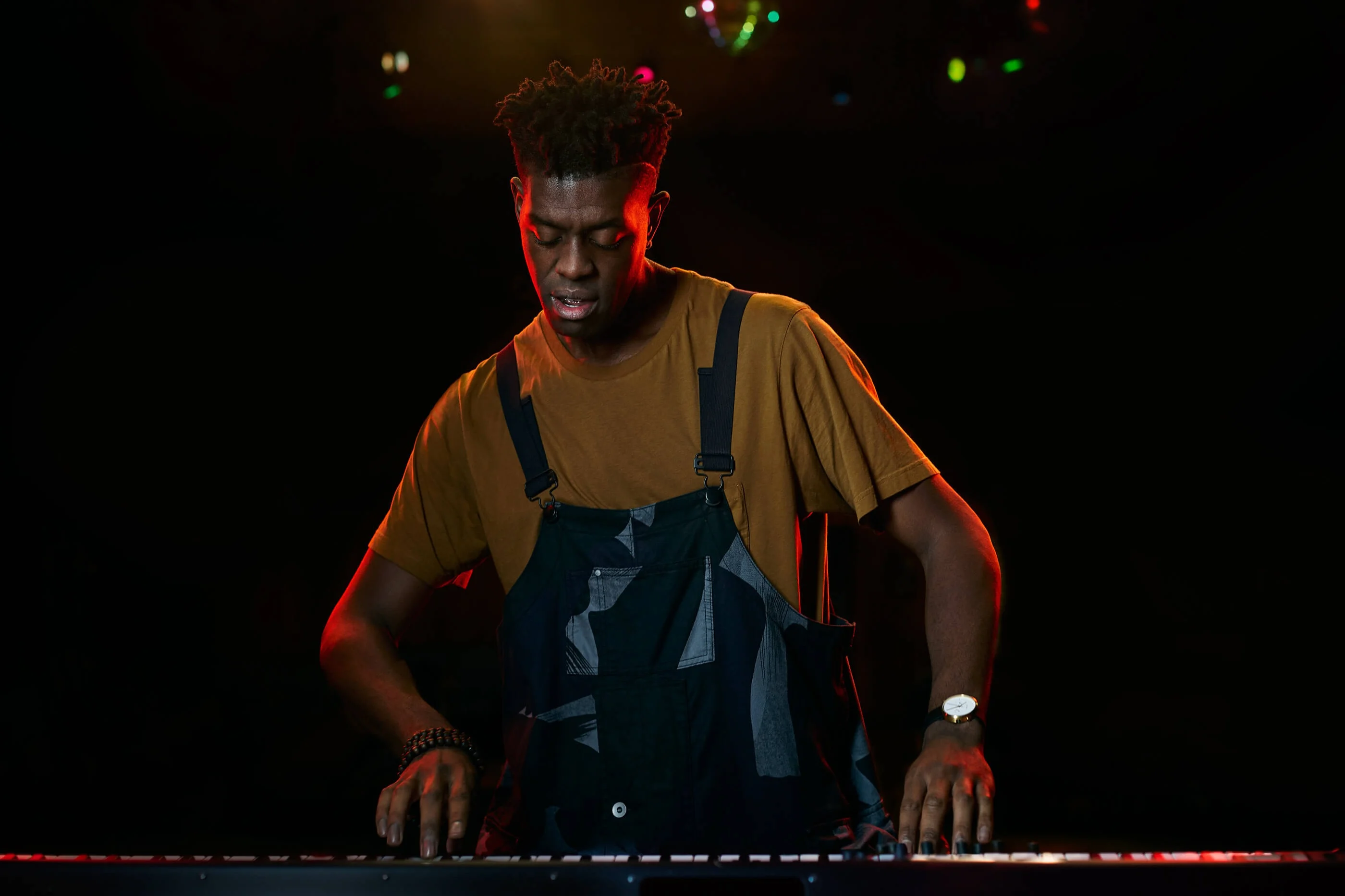
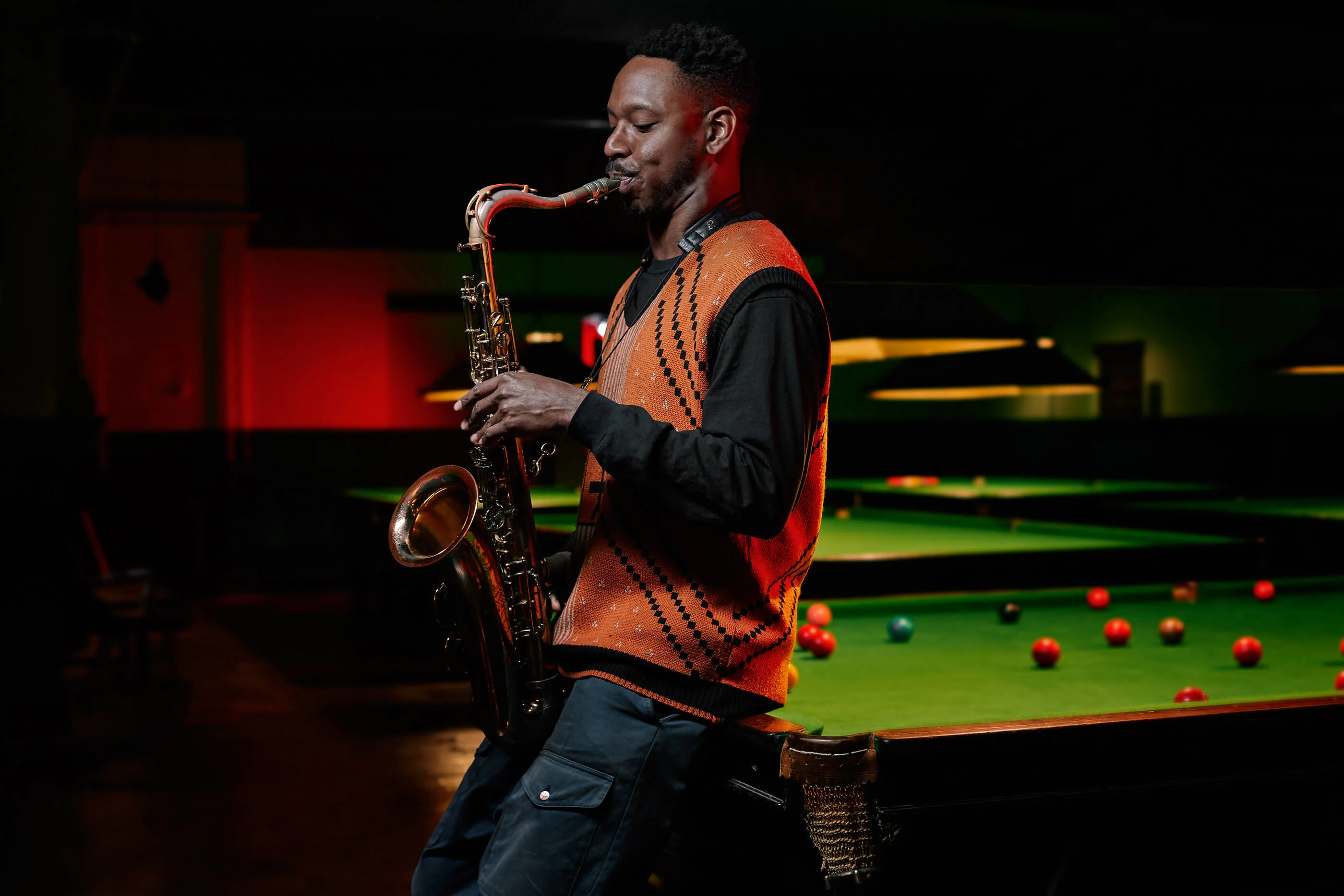
In music, the spaces between the notes are as important as the notes themselves
Jazz as a genre has constantly evolved over time. Globally, musicians are collaborating with other artists from a myriad of genres, whether it’s in Los Angeles, New York, South Africa or London, and I think that is contributing to the huge explosion of interest in jazz.
I find the eclecticism and rawness of the London jazz scene so exciting and inspiring. These musicians are drawing their influences from a huge range of genres and artists, which beautifully mirrors the rich diversity of life in London.
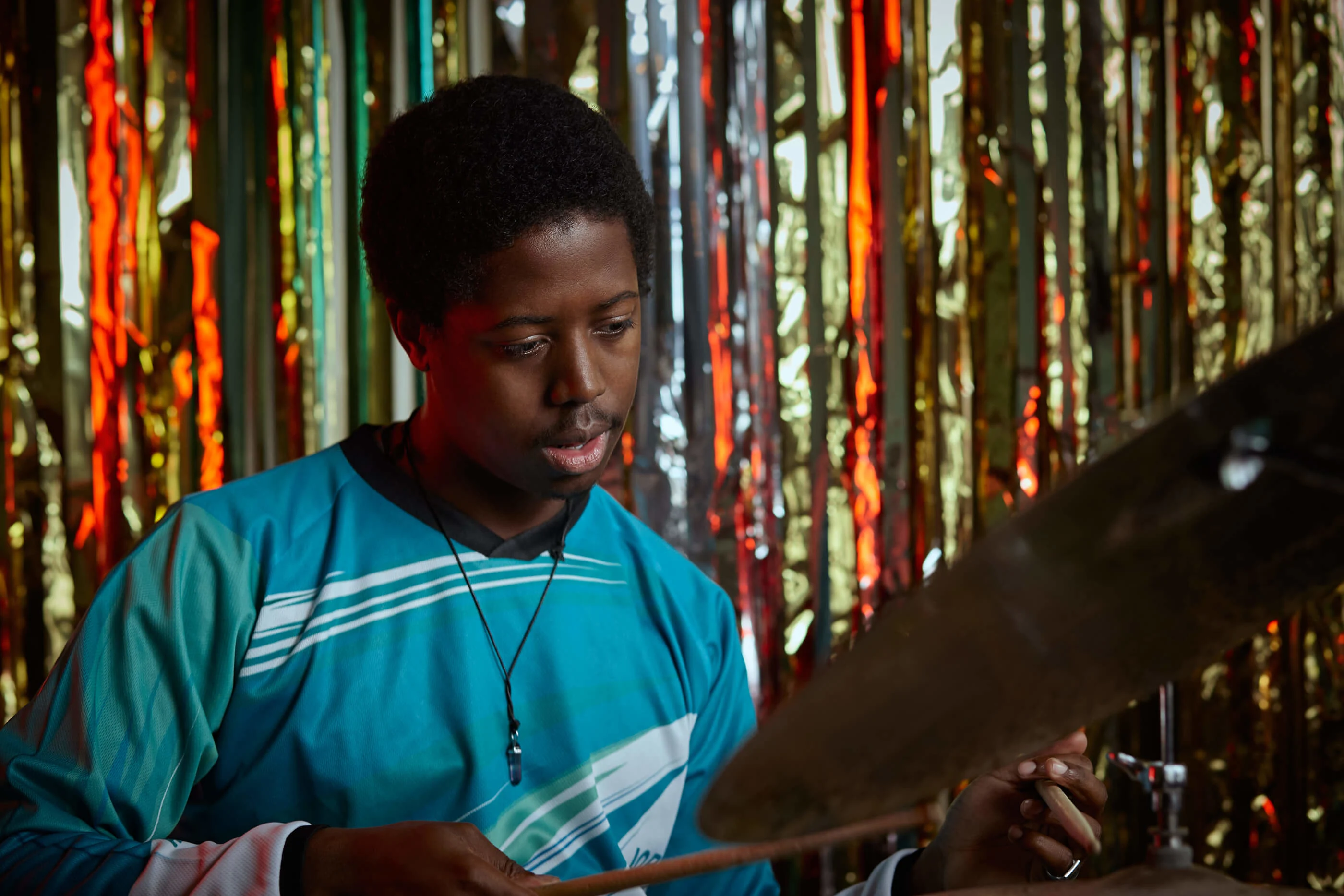


I wanted to photograph the musicians in the quiet moments between playing. In music, the spaces between the notes are as important as the notes themselves, and I wanted to convey that visually.
I wanted the aesthetic of the images to be very filmic, and I felt that this location, combined with the way I knew I wanted to light the subjects would lend the images a timeless quality.

Fabrice Bourgelle
I was raised on all kinds of music. Jazz was a staple in my household, and I always remember my Dad grabbing me as a kid during solos and making me pay attention to the emotional voyage we were invited to go through in that moment. But it was Miles that ultimately captured my imagination with Kind of Blue, which I had on repeat over many late nights locked away in my room during my teens.
Meanwhile, during that time, hip-hop started to reveal the other pieces of the larger puzzle. It was through geeking out over samples and digging and busting out my own solos as a scratch DJ that I realized the true meta-qualities of the form. Jazz’ nature is to ultimately go beyond the idea of a genre and to understand it more as a reflection of our desire to improvise as humans.
We all know the usual cultural tropes around the word 'jazz' and some of them have certainly not always helped the form move forward, nor have those stereotypes always given the communities that have innovated the music from the beginning the visibility and recognition they deserve. Meanwhile, the music's capacity to imbue itself with its surroundings and reinvent itself throughout the ages without losing its energetic honesty remains stronger than any stereotype that precedes it.
One of the premises of this piece was to shine a light on the fact that this very phenomenon was happening in real time in front of us here in London. From there it was just a question of asking honest questions and ultimately asking the artists themselves how they felt like being represented and trying to create a depiction as close as possible to that.

The only way this was ever going to work on any level was to try and be as inclusive as possible as the community itself is pretty much defined by that ethos. From chats with the label to discussions with friends and family in the community, it was clear that this was going to be about a wide range of people making, sharing and exploring the music at the moment.
The main characters you see are also clearly aware that no one would be where they are now if it wasn't for everybody's collective support. My way of demonstrating this ethos and energy was to literally cram in as many names, faces and places as I could, knowing very well I was never going to be able to cover everybody.

When people talk about a rebirth, or a new UK jazz era, or whatever scene-related term they use to talk about what's been happening in London, it's important to keep in mind that this is not the first nor the last of these waves. Speaking to the elders and other long time supporters you start to get a sense that there always have been incredible players in London and in the UK for that matter. Now the platforms to create and share the music are much less restrictive than before. The voices of Garry Crosby (Tomorrow's Warriors) and Adam Moses (one half of Jazz Refreshed) are just a few among many many mentors.
All of the players you see or hear have been involved for over a decade and are already teaching, playing with and supporting the next generation without a sense of hierarchy or status. For that reason and so many more, this film was really made for the community first and then for the world to enjoy. I'm just happy these talented people are receiving the love they themselves have been showing for years.

